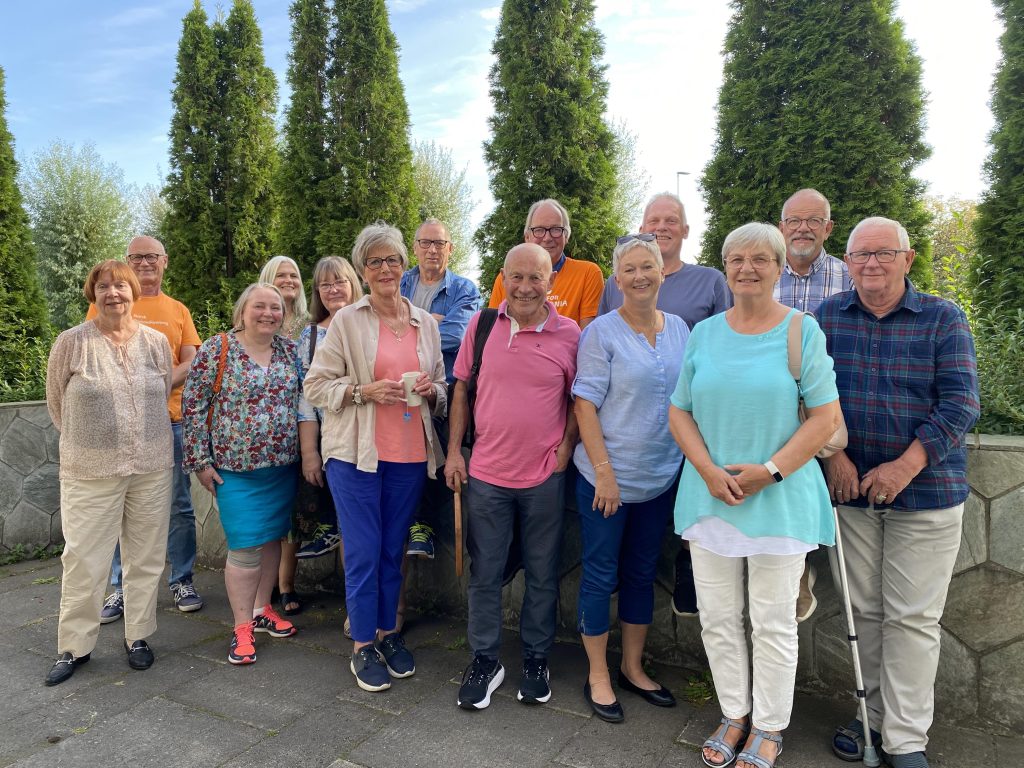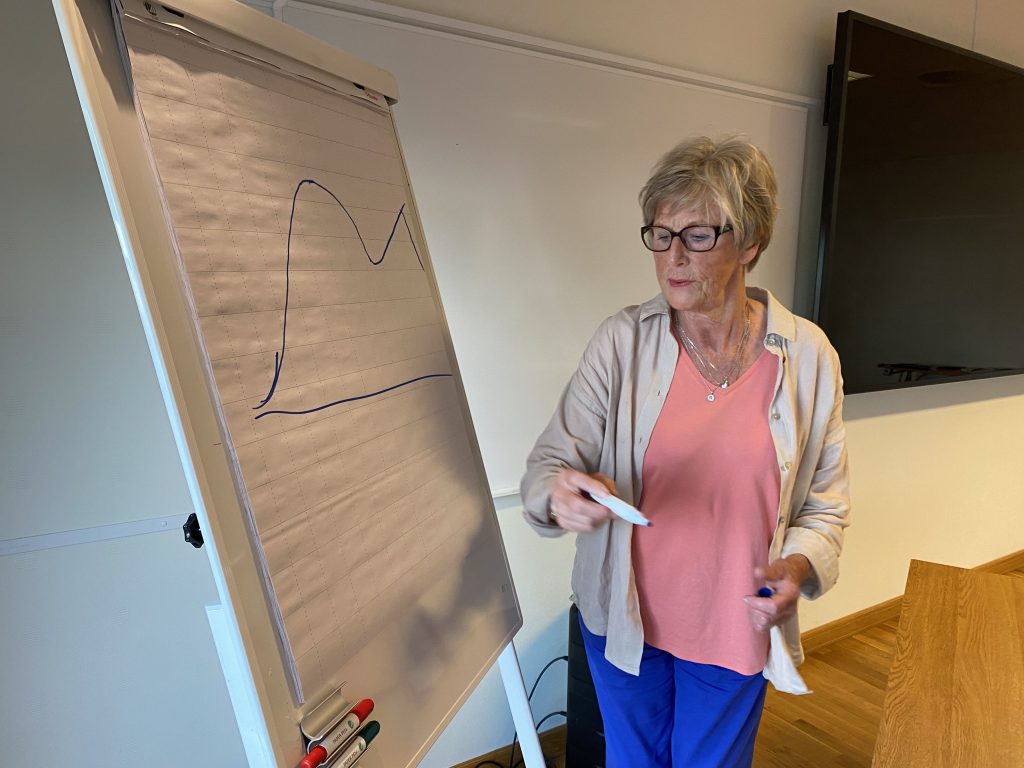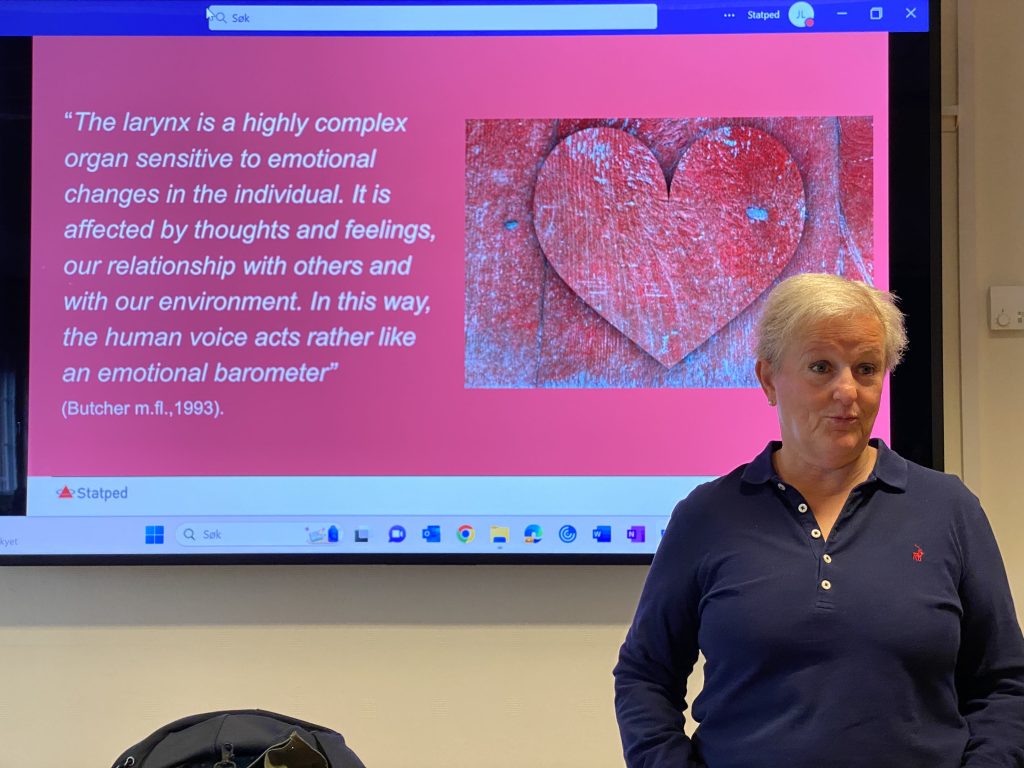 Jens Øyvind Loven, Jannicke Devold and Jorid Løvbakk are specialists in spastic dysphonia also called laryngeal dystonia. On the 6th and 7th September 2023 they were happy to participate in a meeting held by the Norwegian Dystonia Association at Hotel Olavsgaard, Skjetten in Norway about the condition and the treatment opportunities. Altogether there were 15 participants, including the Norwegian Dystonia Association (NDF) board.
Jens Øyvind Loven, Jannicke Devold and Jorid Løvbakk are specialists in spastic dysphonia also called laryngeal dystonia. On the 6th and 7th September 2023 they were happy to participate in a meeting held by the Norwegian Dystonia Association at Hotel Olavsgaard, Skjetten in Norway about the condition and the treatment opportunities. Altogether there were 15 participants, including the Norwegian Dystonia Association (NDF) board.
Spastic dysphonia is a neurological disorder that affect the vocal cords. In Norway it is estimated that there are approximately 250 people that are affected by this rare disease. The cause is most likely “faulty signals” in the brain which causes the vocal cord muscles to contract and become tight and not function normally.
The help one could give patients with spastic dysphonia has been very limited. The patients were often devastated, many unable to work due to this rare disorder. This led to a commitment for Dr. Jens Øyvind Loven, psychomotor physiotherapist Jannicke Devold and speech therapist Jorid Løvbakk to find a way to improve life quality for the patients. Through their different roles they cooperated to achieve the best possible form of treatment for the patients.
Dr. Loven said there was a breakthrough in the treatment of spastic dysphonia at the end of 1980’s when there was a report on the use of botulinum toxin (BTX) as a treatment. Professor Andrew Blitzer at Columbia University in New York was a pioneer and the first in the world that started this treatment for spastic dysphonia. Jens Øyvind Loven travelled to Columbia University, New York in 1991 and learned about this treatment method from Prof Blitzer. Shortly after Loven started, together with Neurophysiologist Dr. Trond Ganes and Dr. Kjell Brøndbo, treatment with botulinum toxin (BTX) was started for spastic dysphonia in Norway. They were among the first in Europe to start BTX treatment for this rare disease.
According to Dr. Loven the treatment of spastic dysphonia with BTX was revolutionary. The treatment results have been especially successful for patients with primary (idiopathic) dystonia and with primary adductor spastic dysphonia.

Treatment with BTX can help lessen the symptoms and improve the quality of the voice and therefore the quality of life for those who have spastic dysphonia. However it is often necessary with in depth interdisciplinary examination to find out more about the cause and why the body /muscles tighten and the breathing becomes limited and does not allow enough air for the voice. Psychomotor physical therapist Jannicke Devold spoke about this and said that stress has been mentioned as a triggering factor for spastic dysphonia. Stress can be many different things, but often it is about the feeling of incompetence.
Psychomotor physical therapy treatment helps to become aware of the muscles being tense, to make a change in the body, and to provide increased familiarity and contact with one’s own body. Its goal is to develop self-help. The treatment starts with a conversation and an examination. Inhaling often comes naturally, and we often say take a deep breath, however it is equally important to take the time to breathe out properly.
Speech therapist Jorid Løvbakk has a lot of professional experience on spastic dysphonia. Løvbakk explained the work of the speech therapist regarding spastic dysphonia. In the first appointment there is an examination and awareness of the use of the voice.
Spastic dysphonia is a rare neurological condition.
Speech therapy will normally not lead to a cure but can help the person affected by this condition to cope better with spastic dysphonia.


In total there was very good feedback from the meeting and it was a success, says NDF President Johan Arnfinn Warvik. This also includes the presenters wholehearted effort.
Photos: Vidar Bjørkli
A summary of article by Vidar Bjørkli, Norwegian Dystonia Association
Merete Avery,
Operations Manager Dystonia Europe
